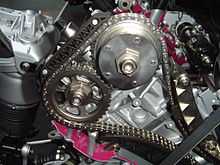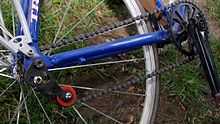Tensioner


A tensioner is a device that applies a force to an object to maintain it in tension. Often the amount of force is adjustable. There are tensioners for applying a tensioning force to drive belts and chains, fibers, and bolts. One type of tensioner is a large industrial spring. A tensioner is used between two objects that should be kept together but that make relative, more or less unpredicted, motions towards each other. The tensioner makes sure that independent of the motion the connection remains intact, without elements becoming overstressed. An anchor chain could be defined as the easiest tensioner.
Applications
A car engine is an intricately built mechanism. To aid the moving parts within the compartment, a tensioner on a belt provides assurance that a main driving pulley does not become loose.
Function A tensioner works along with the serpentine belt, which is the pulley that drives the engine’s accessory components, such as the air conditioning compressor or water pump. To prevent damage or failure, a tensioner makes sure that the serpentine belt is tightly placed along its normal pulley route.
Features The tensioner employs a spring that places pressure along the serpentine belt for an intricate hold. Additionally, the tensioner allows some movement based on the typical vibrations associated with the accessories so that the serpentine belt is not stretched over time.
Warning When a new serpentine belt is needed, make sure to inspect the tensioner at the same time. If it is worn, it should be replaced so that the new serpentine belt has proper traction along its path.
Drilling rigs
Most tensioners can be described as industrial springs. A marine riser tensioner on board a drill ship, for instance, consists of two sheaveblocks with a wire over it. Both sheaveblocks are connected by a hydraulic cylinder and the oil of the hydraulic cylinder is connected to a gas volume under pressure. When the wire rope is connected to a riser, the wire rope is kept under a certain stress, so that the riser does not buckle. If the ship moves up and down, the tension in the wire rope is changed a bit (depending on the spring characteristic). Another example is a guideline tensioner.